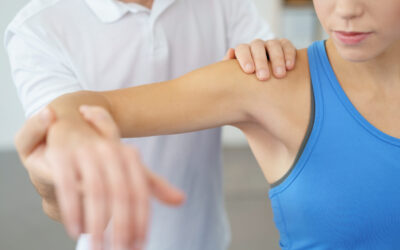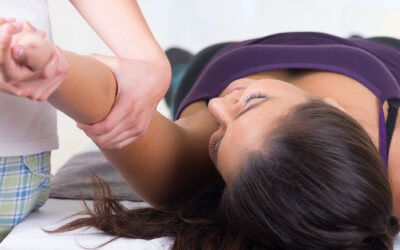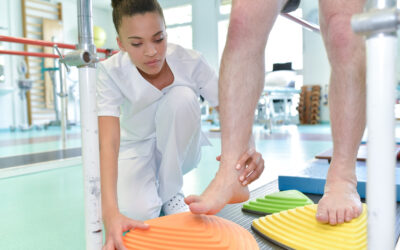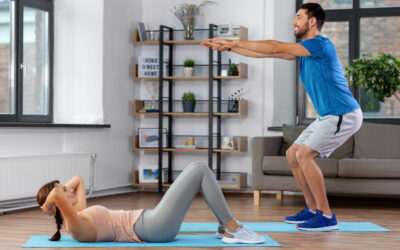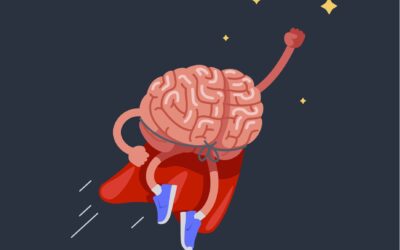Following a neurologic injury, some people experience a leg that feels stiff, heavy, or both. This can make walking difficult. In this video, you will learn the best exercise routine to relearn how to lift the leg more efficiently and minimize the sensation of having a “heavy leg”.
What causes the leg to feel stiff?
Damage to the neurologic system can cause two problems that significantly impact the body’s ability to move. These are spasticity and abnormal synergy patterns. Spasticity, an involuntary muscle contraction, in the quadriceps (muscles that straighten the knee) can make the knee difficult to bend while walking. This can cause the leg to feel like it is stuck to the ground. An abnormal synergy pattern can also cause the knee to want to stay locked out straight. Both of these movement problems can make the leg feel heavy and make walking difficult
What are the best exercises for a stiff or heavy leg?
The best place to start is lying down with the knees bent. Starting with the knees bent will make it easier to lift the leg. Lying down, can help the body to stay more relaxed and may minimize the impact of the abnormal muscle synergy and spasticity noted above.
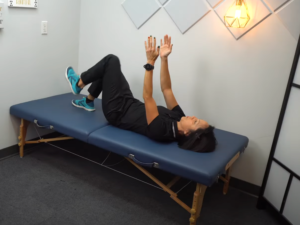
Next, try starting with the leg starting from a more extended position.
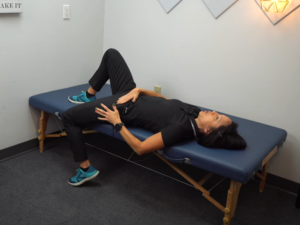
If that is too difficult, you might want to try using the core max to assist
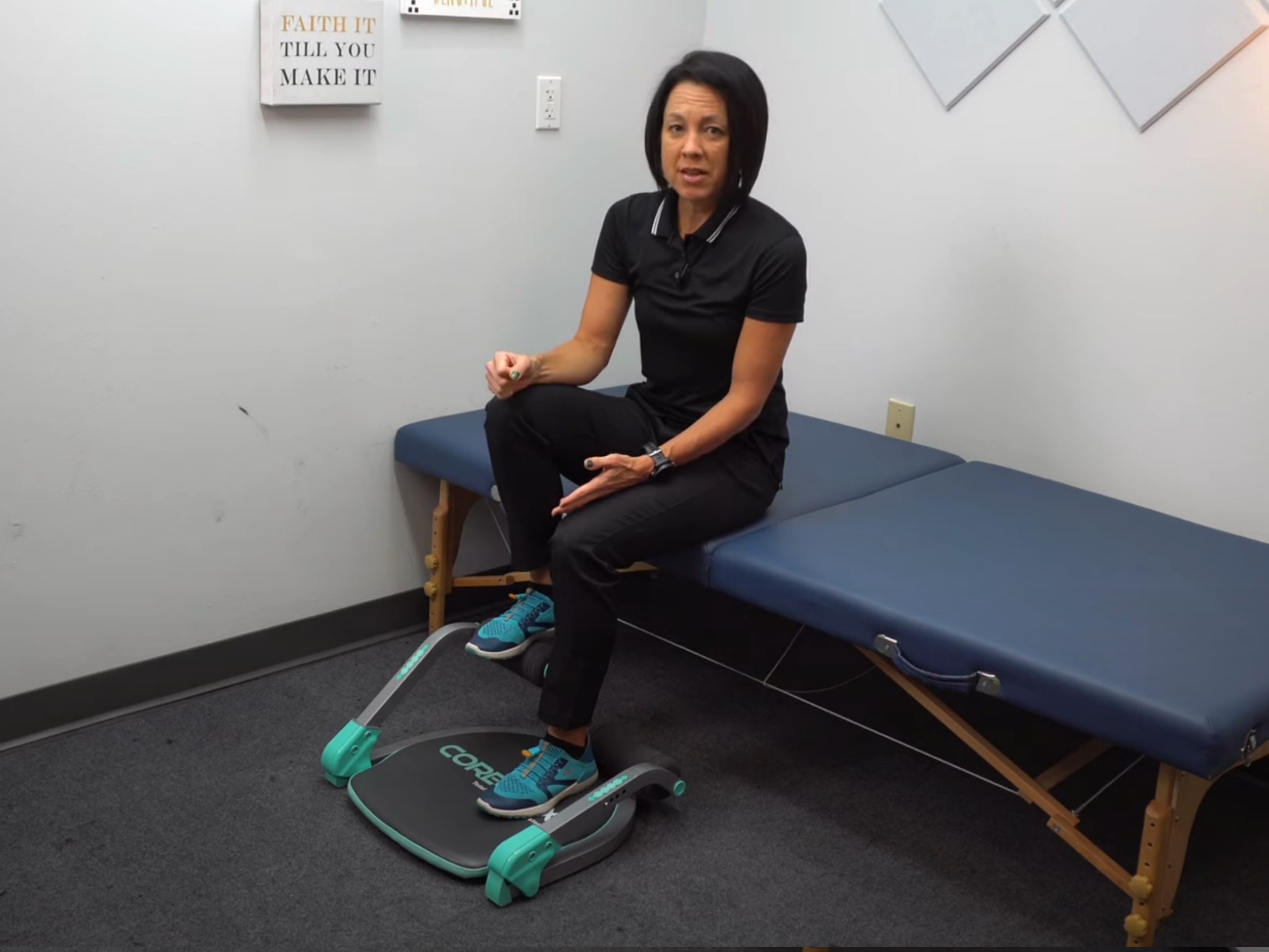
Next, you can move on to trying to bring the leg forward in standing. Use something under your foot to make it easier to bring forward. I recommend a mini skateboard
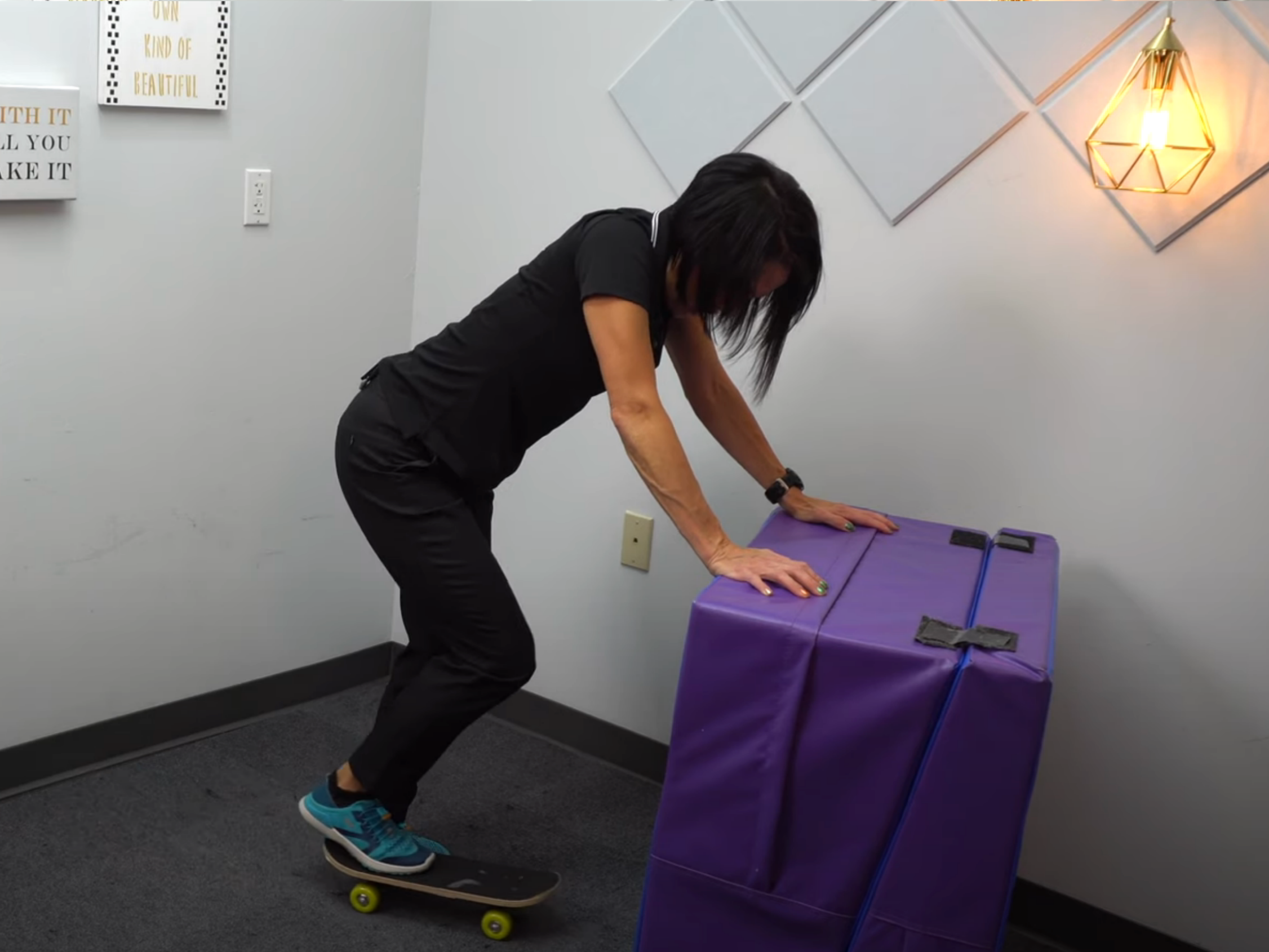
Once you can bring the leg straight forward, try adding a step
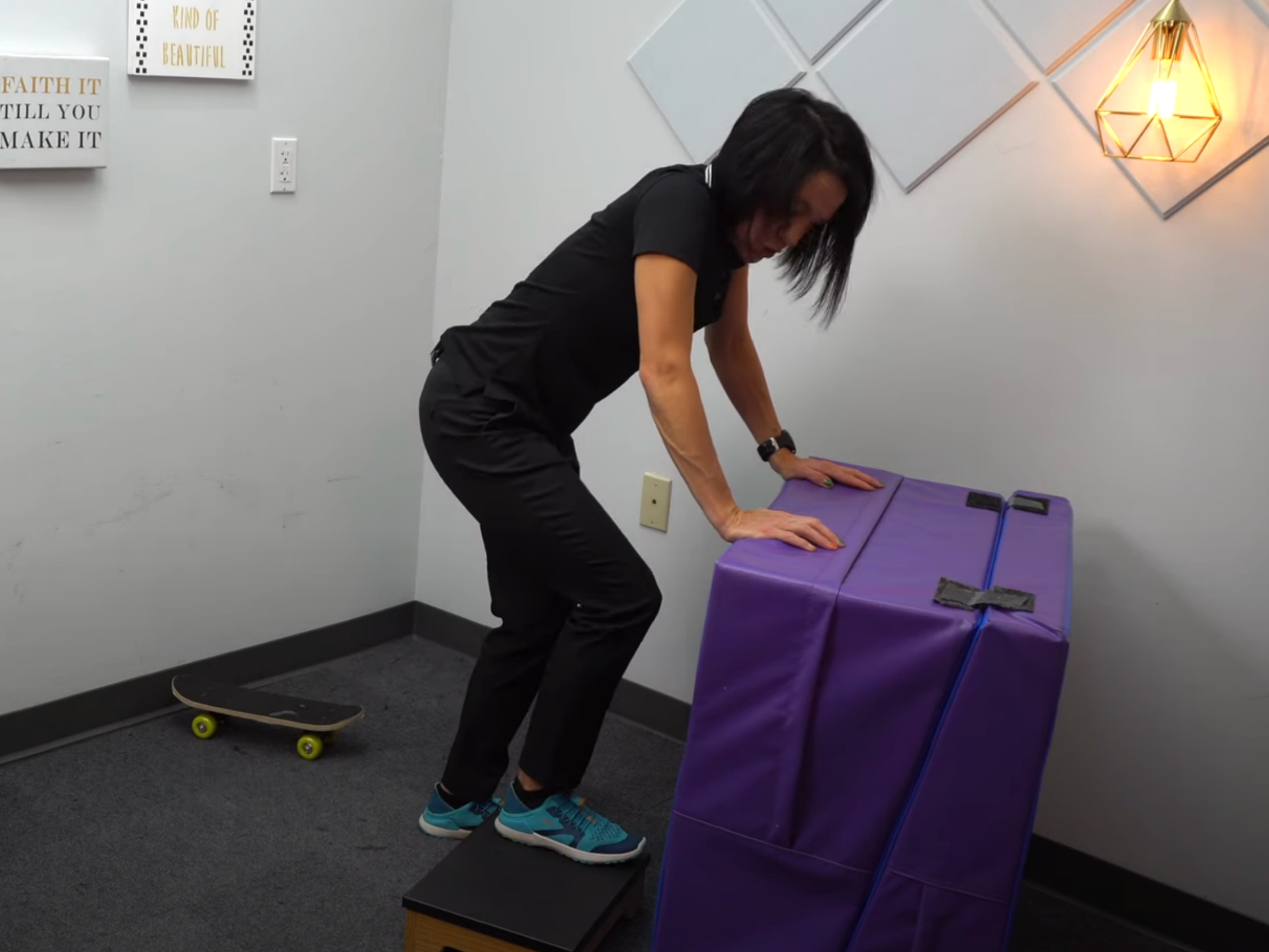
Once you can lift the leg up onto a small step, try working the end range of hip flexion
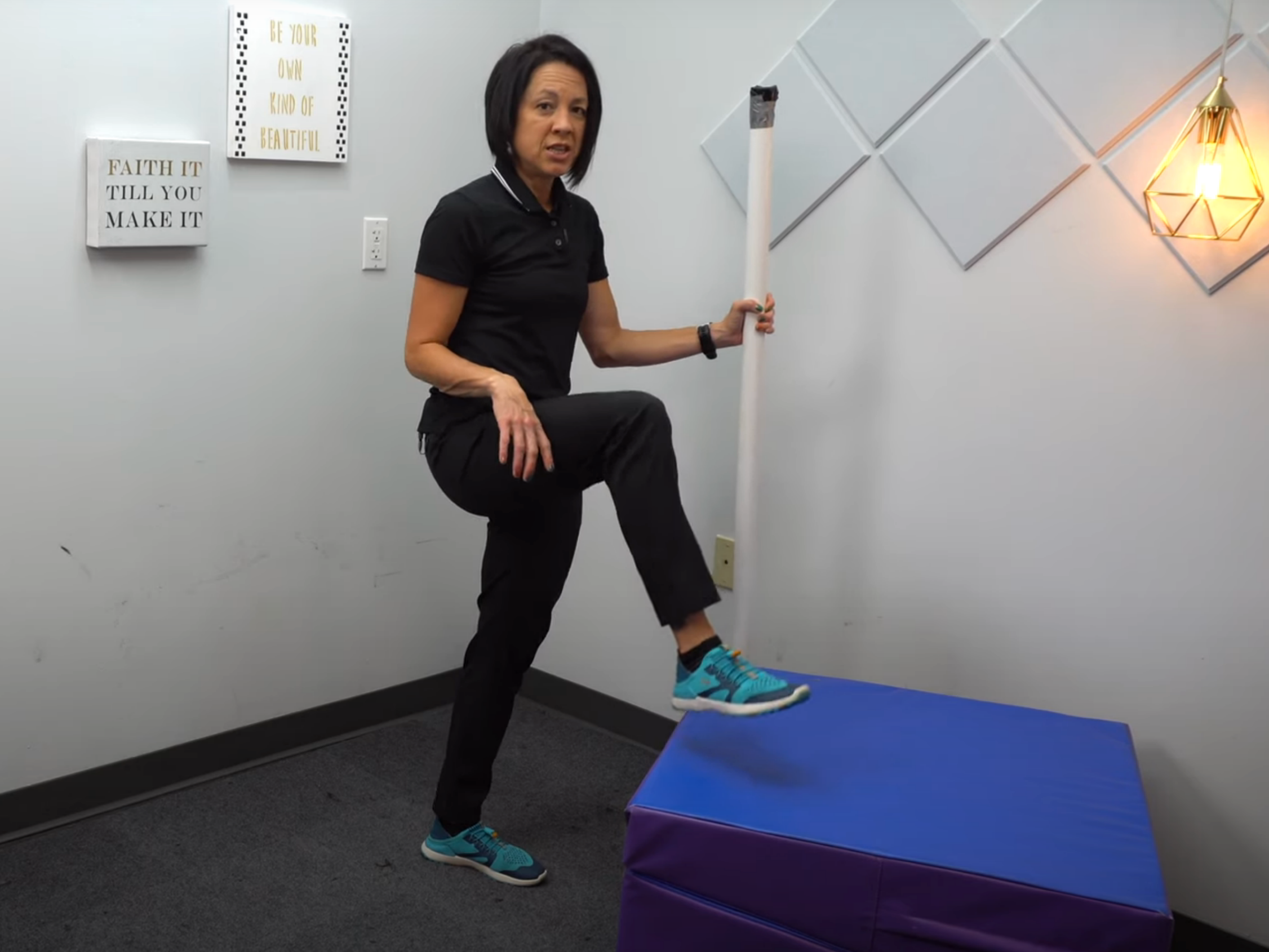
One final recommendation that I have is to use a tool to help you work on lifting the leg while walking. A resistance band belt can significantly help to “normalize” your walking pattern if you have a heavy leg.
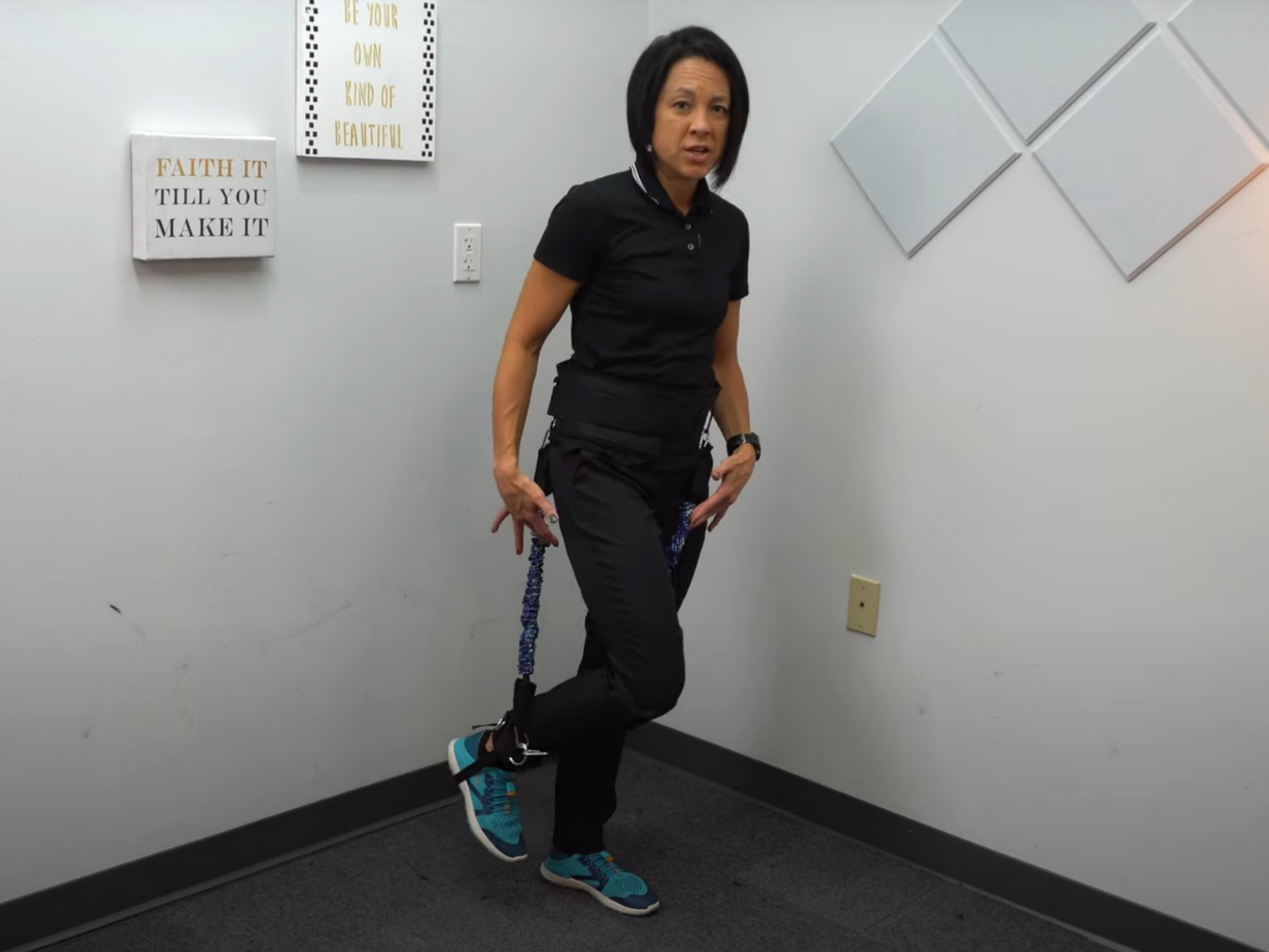
Other articles you may be interested in:
Stroke Arm Rehab Daily Exercise Routine
A stroke or damage to the neurons in the brain can cause the inability to move the arm. It can also cause stiff and tight arm muscles. A stroke arm rehab routine should incorporate the principles of neuroplasticity (the ability of the brain to rewire when presented...
What is your Ikigai?
Not everyone wants to live a long life. But what about a happy and healthy life? If this is you, sit down and pull up a chair. Ikigai might be the answer.
Implications of Sleep and Neurological Rehabilitation
https://youtu.be/FWIX8Ht6bm4 Good quality sleep can dramatically improve neurologic rehabilitation outcomes. Getting adequate sleep might also decrease the rate of disease progression in some neurodegenerative diseases (multiple sclerosis, Parkinson's disease, or...
Stroke Rehabilitation: Overcoming Mental Barriers
Dealing with the aftermatch of a stroke can lead to a whirlwind of emotions including confusion, hopelessness, disappointment, and even despair. If you are in the process of recovery, these emotions are completely normal. Here I break down some of the most common...
Arm Exercises For Stroke Patients (Early Stage)
Arm exercises after a stroke are critical and should be performed daily. Here are the best exercises and why you should be doing these every day. Who will benefit from early-stage stroke arm exercises? The early stage of recovery is considered the first 6 months after...
Not what you get, but what you become
"What you get by achieving your goals is not as important as what you become by achieving your goals." -Zig Ziglar I often get messages from people who are feeling discouraged. "Progress isn't fast enough". "The process is too challenging". Oh, and by the way, "this...
The Gift of Language
“I will never do (X) ” “I Can’t” “I am always going to be this way” “I will be this way forever” “This is impossible” If you have been following me for a while, you know that I discourage this type of language. It is self-limiting at best, and self-destructing at...
Balance Exercises For Stroke Patients
Balance exercises for stroke patients are critical for improving walking confidence and returning to normal life What is Balance? Balance is the ability to maintain the center of mass (the body) within the base of support (the feet). Balance is also the ability of the...
Best Exercise Equipment for Multiple Sclerosis
If you have multiple sclerosis, home exercise equipment is critical for maintaining mobility. Neuroplasticity is the brain's ability to re-organize dependent upon exposure to new or novel experiences. After an acute exacerbation, neuroplasticity requires thousands of...
Best Brain Exercises For Stroke Recovery
Best Brain Exercises For Stroke Recovery A stroke can cause long-term damage to the brain, impair movement, and significantly diminish cognitive abilities. Mobility and strength training to retrain the muscles after a stroke is a huge part of the stroke recovery...


